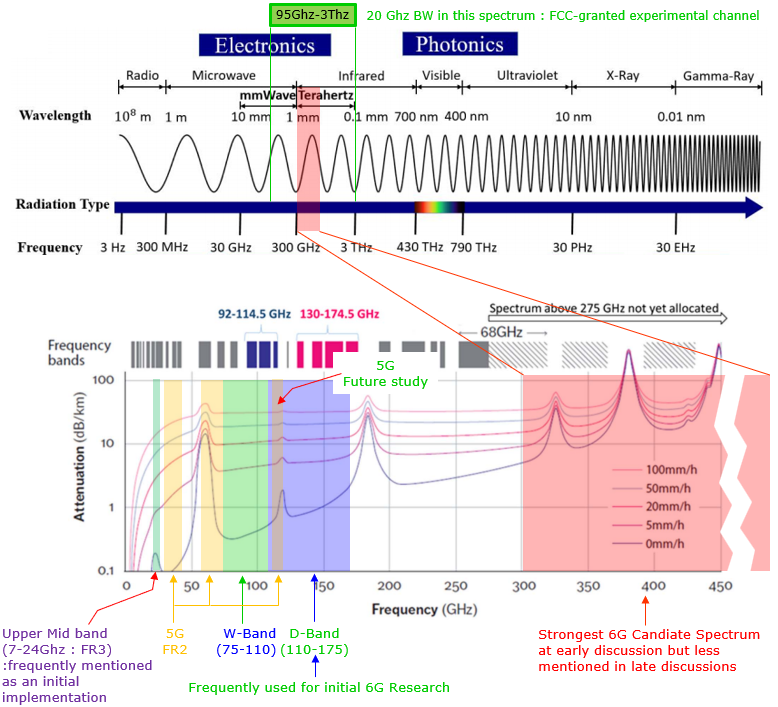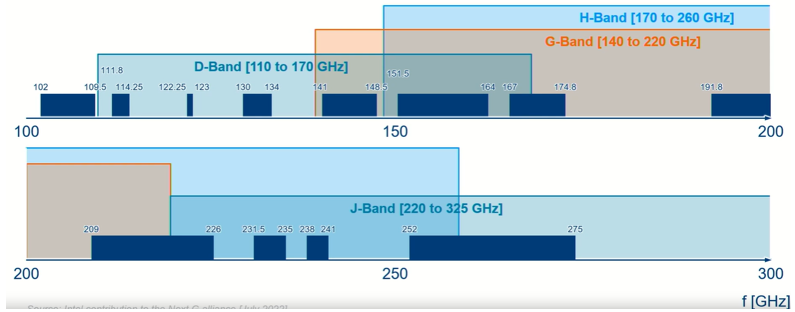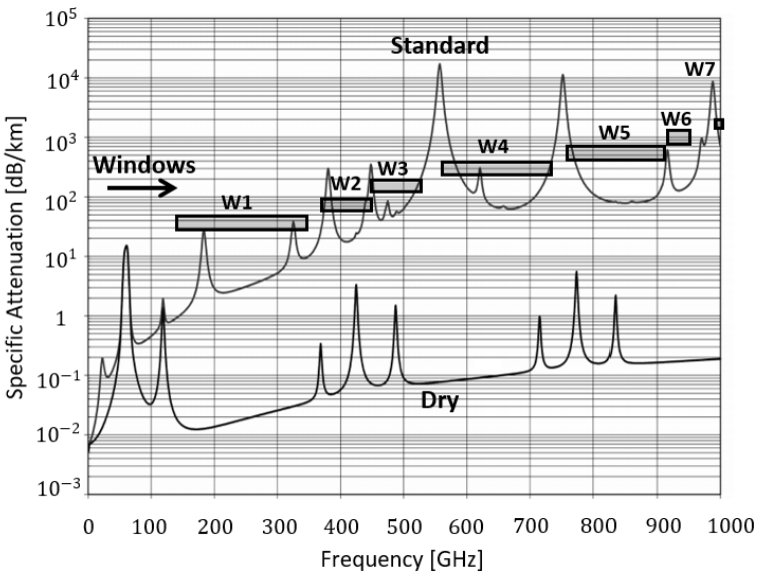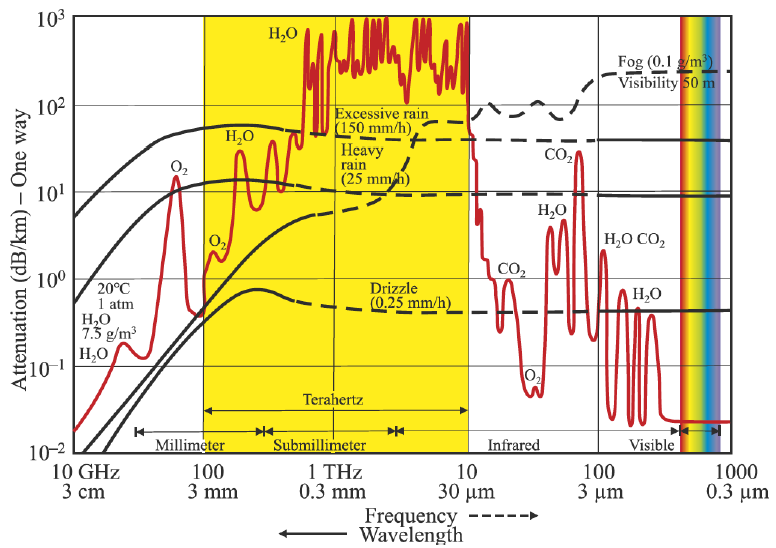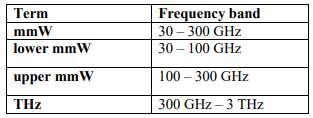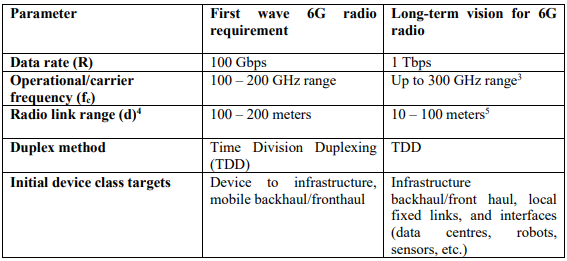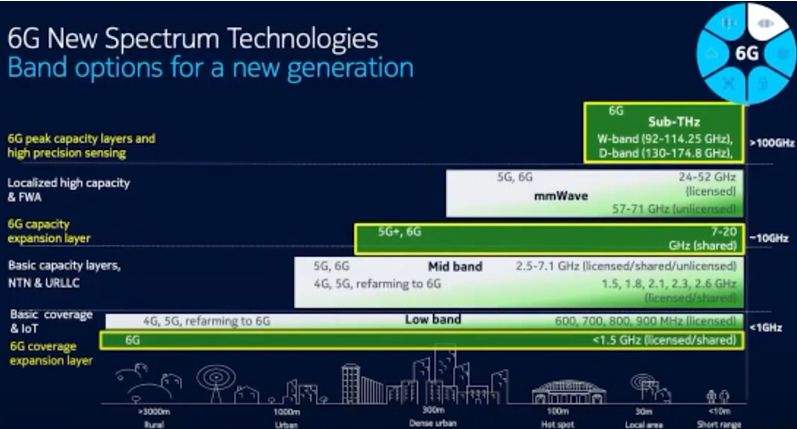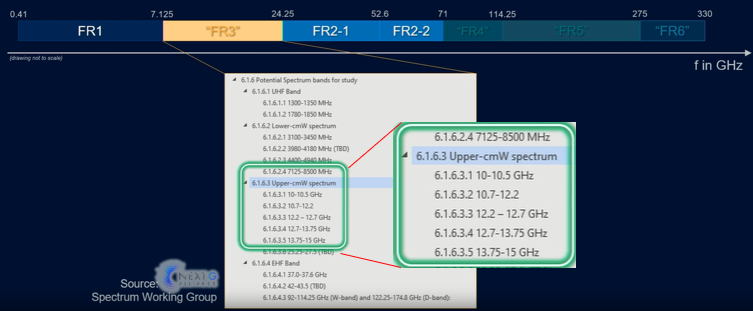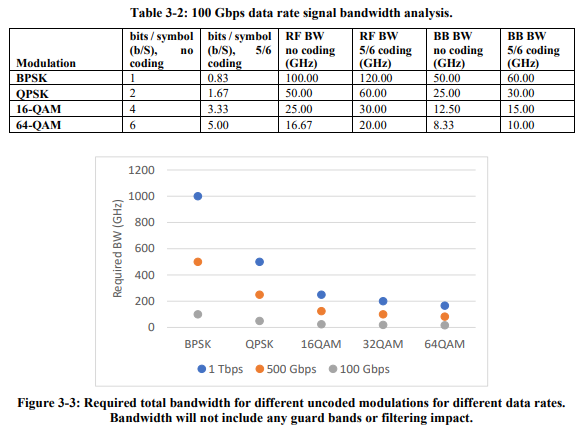|
|
||
|
At the time of writing the initial version of this note (early 2021), it seems that teraHeartz frequency (0.3 ~ 1 THz) is taken as the strongest candiates. However the debate over the best frequency for 6G will continue and we may end up with multiple segements of spectrum sitting far apart from each other being used for 6G. It may proceed as it has gone through in 5G. In 5G/NR, mmWave was taken as the major spectrum for 5G and this was a strongest trigger for 5G at early discussion. And then at the phase of formalizing 3GPP, another segment (FR1) sitting far away from mmWave(FR2) was introduced. Finally in real deployment, at least as of now (Oct 2021) FR1 seems to be the dominent spectrum for 5G which is far away from the initial 5G dream. As the studies on 6G develops and we learn more on realities of 5G deployment (as of early 2025), it seems 5G history repeats in 6G spectrum as well. At first, the industry ambitiously thought of utilizing sub Thz spectrum and then start shrinking the dream down to D/W band (70Ghz~170Ghz) and finally most of discussions seems to be focused around FR3 (7-24Ghz).
This shows a simple and lighthearted "journey" of how discussions around 6G spectrum have evolved over time. Think of it as a roadmap showing how the industry's excitement and expectations have changed.
Followings are some breakdown of the evolution of 6G spectrum discussions.
6G Spectrum CandidateFor now (as of writing this, May 2021), the strongest candidates for 6G spectrum seems to be between 0.3 THz(300 GHz) and 1 THz. This frequency would be an interesting region which is right above the maximum radio frequency and right below the lowest spectrum of light. But electronics, test equipment etc are not fully prepared for the research in this are for communication purpose and majority of the research on communication in this epctrum is being done in a few spectrums lower than this are as highlighed in the figure below.
Reference : ETSI, NYU Wireless Following is a range of candidate spectrum magnified across the range of 100-300 Ghz from various sources. Basically most of these diagrams are saying the same thing in a little bit different way. I am just compiling the diagrams from different sources to help the readers build up some intuitions of the spectrum.
Source : Rohde & Schwarz Following figure shows various 6G spectrum candidates and potential applications for the spectrum segments.
Source : Wireless Keynote; Onward to 6G! Jeffrey Andrews PhD, UT
Following figure shows the potential communication windows within the range of the 6G candidate spectrum. The Windows are the area where the specific attenuation is relatively lower than surrounding spikes.
Source : 6G Wireless Systems: Vision,Requirements, Challenges,Insights, and Opportunities
Source : Terahertz Communication: The Opportunities of Wireless Technology Beyond 5G
Following is the frequency range and the frequency candidate for 6G defined by Hera-X deliverable document.
Source : Deliverable D2.1 Towards Tbps Communications in 6G: Use Cases and Gap Analysis
Source : Deliverable D2.1 Towards Tbps Communications in 6G: Use Cases and Gap Analysis
Source : Keynote 1: The road to 6G and what 5G still has in store (PIMRC 2021) Possible Candiates in sub-mmWave (FR3 ?)We all know that there are much available resources (bandwidth) in the range of sub tera-hertz and tera-hertz However, we all know that the utilization of the such a high frequency spectrum is extremely challenging manily based on the experience in 5G. As the industry use FR1 as a major anchor point and use FR2 on necessicity bases, it seems to (likely to) follow similar approaches (i.e, using a low frequency anchor point and use high frequency (sub terahertz) on necessicity bases). As a strong candidates for the low frequency anchor point, a spectrum of low frequency often called as FR3 in many documents or presentation are being proposed as follows.
Source : Rohde & Schwarz How much bandwidth we need for 6G ?The answer to this question would vary depending on many factors like modulation scheme, spectrum efficiency (how many bits can be carried by 1 Hz frequency spectrum). The rough estimation done by Hera-X is as follows. According to this, even with 64QAM we would need around 20GHz BW. It would be challenging to achieve this bandwidth in single carrier... so likely to require multiple carrier (carrier aggregation) to achieve this.
Source : Deliverable D2.1 Towards Tbps Communications in 6G: Use Cases and Gap Analysis Are we sure of going with Terahertz for 6G ?When the 6G discussion started a couple of years ago and suggested Terahertz to be a major spectrum, everybody seems to accept the idea (at least no strong resistance against the idea as far as I remember), but as time goes on the debate over the teraheartz idea started heating up. As of now (Oct 2021), I see roughly three categories of opinions as summarized below.
Why Terahertz ?This may be supporting 'Optimistic' opinions mentioned above. Why we are considering Terahertz as a major spectrum for 6G ? The consideration of Terahertz (THz) frequencies as a major spectrum for 6G is driven by its potential to revolutionize wireless communication, pushing the boundaries of speed, capacity, and efficiency. While there are many challenges in making THz practical for real-world deployment, its advantages align with the ambitious goals of next-generation networks. Below are the key reasons why Terahertz frequencies are being explored for 6G Some of the advantage of Terzhertz spectrum can be listed as follows (Ref[5])
Reference :[1] ETSI GR mWT 022 V1.1.1 (2021-04) : Analysis of Spectrum, License Schemes and Network Scenarios in the RF bands above 174,8 GHz [2] ETSI GR mWT 018 V1.1.1 (2019-08) : Analysis of Spectrum, License Schemes and Network Scenarios in the W-band [3] ETSI GR mWT 008 V1.1.1 (2018-08) : millimetre Wave Transmission (mWT); Analysis of Spectrum, License Schemes and Network Scenarios in the D-band [4] Hera-X : Deliverable D2.1 Towards Tbps Communications in 6G: Use Cases and Gap Analysis [5] Terahertz Band Communication: An Old Problem Revisited and Research Directions for the Next Decade [6] 6G Wireless Systems: Vision,Requirements, Challenges,Insights, and Opportunities - 2021 [7] 6G Spectrum Considerations - NEXT G ALLIANCE
|
||

